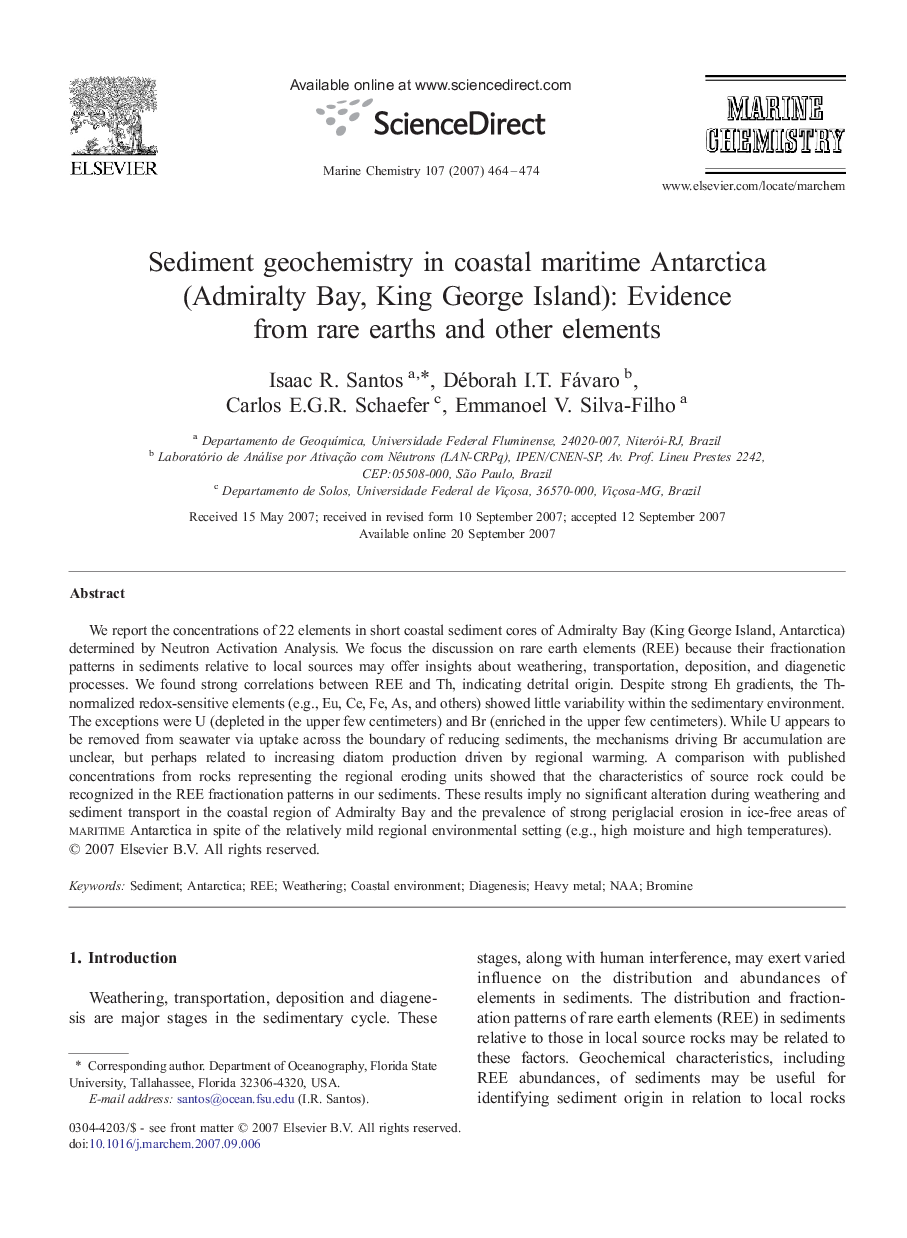| Article ID | Journal | Published Year | Pages | File Type |
|---|---|---|---|---|
| 1263250 | Marine Chemistry | 2007 | 11 Pages |
We report the concentrations of 22 elements in short coastal sediment cores of Admiralty Bay (King George Island, Antarctica) determined by Neutron Activation Analysis. We focus the discussion on rare earth elements (REE) because their fractionation patterns in sediments relative to local sources may offer insights about weathering, transportation, deposition, and diagenetic processes. We found strong correlations between REE and Th, indicating detrital origin. Despite strong Eh gradients, the Th-normalized redox-sensitive elements (e.g., Eu, Ce, Fe, As, and others) showed little variability within the sedimentary environment. The exceptions were U (depleted in the upper few centimeters) and Br (enriched in the upper few centimeters). While U appears to be removed from seawater via uptake across the boundary of reducing sediments, the mechanisms driving Br accumulation are unclear, but perhaps related to increasing diatom production driven by regional warming. A comparison with published concentrations from rocks representing the regional eroding units showed that the characteristics of source rock could be recognized in the REE fractionation patterns in our sediments. These results imply no significant alteration during weathering and sediment transport in the coastal region of Admiralty Bay and the prevalence of strong periglacial erosion in ice-free areas of maritime Antarctica in spite of the relatively mild regional environmental setting (e.g., high moisture and high temperatures).
